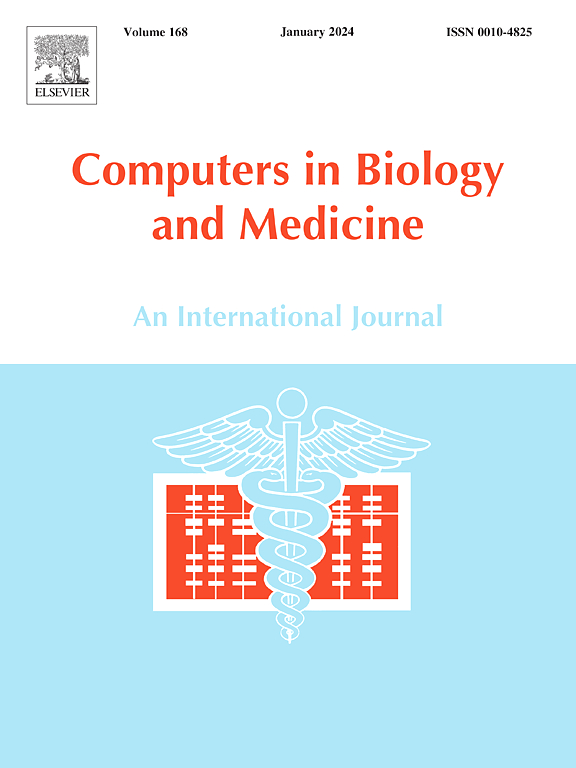生物流体力学中的机器学习:最新进展综述
IF 7
2区 医学
Q1 BIOLOGY
引用次数: 0
摘要
这篇综述文章全面研究了生物流体力学中机器学习(ML)应用的最新进展,重点是实现临床可操作的诊断和模拟。它演示了机器学习,特别是物理知识的机器学习方法,如何用于增强对复杂生物流体动力学的分析和理解。本文系统地分析了各种ML技术,详细介绍了它们在模拟生物流体行为方面的优势和局限性。通过整合物理信息的机器学习方法,如物理信息神经网络(pinn),这项工作解决了将复杂的生物流体动力学转化为实用临床工具的关键挑战。与以前的文献不同,本文不仅总结了当前的方法,而且提出了潜在的解决方案,包括数据增强、迁移学习和混合建模方法(例如,pinn),以克服与有限数据集和复杂物理集成相关的挑战。该综述强调了机器学习提高诊断准确性、实现个性化治疗策略和加速心血管疾病检测和呼吸系统疾病诊断等应用的计算模拟的能力,研究结果表明,机器学习驱动的方法可以将心血管应用中的诊断错误减少多达30%,并提高基于代谢组学的诊断的早期检出率。研究结果表明,虽然机器学习技术显著提高了生物流体动力学的预测能力,但数据稀缺和多尺度物理集成等挑战仍然至关重要。通过概述ML进步和临床实施之间的差距的策略,本综述为未来的研究提供了一个强大的框架,旨在将ML与生物流体力学相结合,以彻底改变医疗保健服务。最后,本文确定了未来的研究方向,旨在进一步将机器学习与特定领域的物理见解相结合,以实现更可靠和准确的生物流体模型。本文章由计算机程序翻译,如有差异,请以英文原文为准。
Machine learning in biofluid mechanics: A review of recent developments
This review paper comprehensively examines recent advancements in machine learning (ML) applications within biofluid mechanics, with a targeted focus on enabling clinically actionable diagnostics and simulations. It demonstrates how ML, and in particular physics-informed ML methods, are used to enhance the analysis and understanding of intricate biofluid dynamics. The review systematically analyzes various ML techniques, detailing their strengths and limitations in modeling biofluid behaviors. By integrating physics-informed ML methods, such as Physics-Informed Neural Networks (PINNs), this work addresses critical challenges in translating complex biofluid dynamics into practical clinical tools. Differentiating itself from previous literature, this review not only summarizes current methods but also proposes potential solutions—including data augmentation, transfer learning, and hybrid modeling approaches (e.g., PINNs)—to overcome challenges related to limited datasets and the integration of complex physics. The review emphasizes ML's ability to enhance diagnostic accuracy, enable personalized treatment strategies, and accelerate computational simulations for applications like cardiovascular disease detection and respiratory disorder diagnosis, with findings showing that ML-driven approaches can reduce diagnostic errors by up to 30 % in cardiovascular applications and improve early detection rates in metabolomics-based diagnostics. Findings indicate that while ML techniques have significantly improved predictive capabilities in biofluid dynamics, challenges such as data scarcity and multi-scale physical integration remain critical. By outlining strategies to bridge the gap between ML advancements and clinical implementation, this review provides a robust framework for future research aimed at integrating ML with biofluid mechanics to revolutionize healthcare delivery. The paper concludes by identifying future research directions aimed at further integrating ML with domain-specific physical insights to achieve more reliable and accurate biofluid models.
求助全文
通过发布文献求助,成功后即可免费获取论文全文。
去求助
来源期刊

Computers in biology and medicine
工程技术-工程:生物医学
CiteScore
11.70
自引率
10.40%
发文量
1086
审稿时长
74 days
期刊介绍:
Computers in Biology and Medicine is an international forum for sharing groundbreaking advancements in the use of computers in bioscience and medicine. This journal serves as a medium for communicating essential research, instruction, ideas, and information regarding the rapidly evolving field of computer applications in these domains. By encouraging the exchange of knowledge, we aim to facilitate progress and innovation in the utilization of computers in biology and medicine.
 求助内容:
求助内容: 应助结果提醒方式:
应助结果提醒方式:


